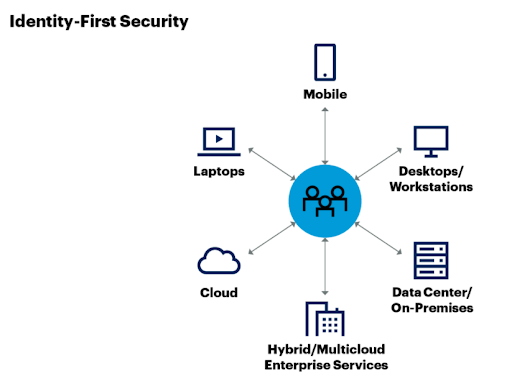In today’s digital age, the threat of cyber attacks and data breaches has become increasingly prevalent. From large corporations to small businesses, no one is safe from the potential consequences of a security breach. As a result, organizations are constantly searching for ways to better protect their data and systems. One strategy that has gained attention in recent years is identity-first security, which prioritizes the identity of the user as the main line of defense against cyber threats.
1. Cybercriminals are targeting identities
Gone are the days when hackers would solely focus on breaking through firewalls and bypassing antivirus software. Today, they have shifted their focus to targeting identities. In fact, according to a study by Verizon, 81% of data breaches are caused by compromised user identities. This is because user identities hold a treasure trove of sensitive information, such as login credentials, personal information, and access to confidential systems. By compromising user identities, cybercriminals can gain access to a company's entire network, leading to devastating consequences.
2. Protects against insider threats
While external cyber attacks often make the headlines, insider threats can be just as damaging, if not more so. These are individuals with legitimate access to a company’s systems who exploit their privileges for malicious purposes. Such threats can come from disgruntled employees, negligent employees, or even careless third-party vendors. An identity-first security strategy can help prevent or mitigate these risks by implementing strict access controls and monitoring user activity.
3. Simplifies access management
In today’s fast-paced business world, employees require access to various systems and applications to get their work done. The traditional approach of using different usernames and passwords for each system can be cumbersome and lead to security gaps. With an identity-first security strategy, organizations can implement a single sign-on (SSO) solution, allowing employees to seamlessly access multiple systems using a single set of credentials. This not only simplifies access management but also reduces the risk of weak and reused passwords.
4. Better compliance with regulations
Compliance with various regulations, such as the General Data Protection Regulation (GDPR) and the California Consumer Privacy Act (CCPA), has become a top priority for organizations. An identity-first security strategy can assist in meeting these compliance requirements by implementing strict access controls and encryption measures. This ensures that only authorized individuals have access to sensitive data, reducing the risk of a data breach and potential regulatory fines.
5. Proactive approach to security
Traditional security strategies often focus on reactive measures, such as firewalls and antivirus software. However, these measures may not be enough to protect against the constantly evolving cyber threats. By prioritizing identity, organizations can take a more proactive approach to security by continuously monitoring and analyzing user activity to identify anomalies and potential threats. This allows organizations to respond quickly and effectively to any suspicious behavior, reducing the risk of a breach.
In conclusion, an identity-first security strategy is crucial in today’s digital landscape. By prioritizing the identity of users and implementing strict access controls, organizations can better protect their data and systems from cyber threats. This proactive approach to security not only reduces the risk of a breach but also helps organizations comply with regulations and simplify access management. As the digital landscape continues to evolve, it’s essential for organizations to prioritize identity as their first line of defense against cybercrime.
Tags:
identity-first

